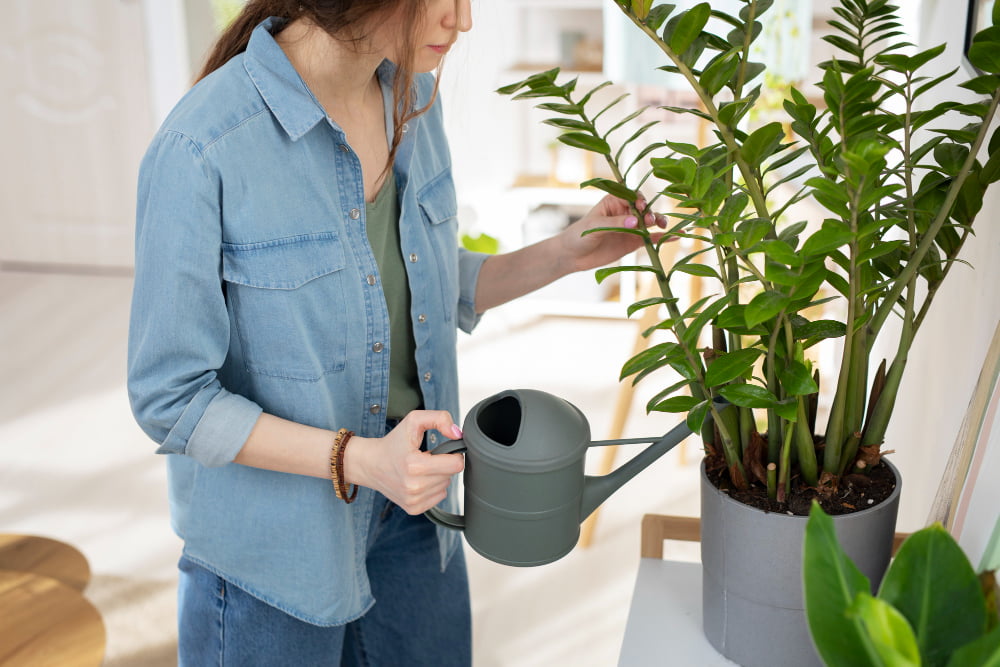Unlocking the Secrets of Properly Watering Your Burgundy Rubber Plant
Introduction
Burgundy rubber plants, with their stunning deep burgundy foliage, are a popular choice among indoor plant enthusiasts. However, ensuring the proper watering regimen is crucial for maintaining their health and vibrant appearance. In this article, we’ll explore the best practices for watering your burgundy rubber plant to promote optimal growth and longevity.
Understanding the Watering Needs Ideal Watering Frequency
Determining the ideal watering frequency for your burgundy rubber plant depends on various factors, including environmental conditions and the plant’s size and stage of growth. As a general rule, aim to water your plant when the top inch of soil feels dry to the touch.
Signs of Underwatering
Underwatering can lead to wilting, drooping leaves, and dry, crispy foliage. If you notice these symptoms, it’s essential to adjust your watering routine to ensure your plant receives an adequate amount of moisture.
Signs of Overwatering
Overwatering is equally detrimental to burgundy rubber plants and can result in yellowing leaves, root rot, and mold growth. If you observe waterlogged soil or foul odors emanating from the pot, reduce the frequency of watering to prevent further damage.
Watering Techniques Top Watering Method
The top watering method involves pouring water directly onto the soil surface until it begins to drain from the bottom of the pot. Allow excess water to drain completely to prevent waterlogging, then empty the saucer beneath the pot to avoid standing water.
Bottom Watering Method
Bottom watering entails placing the plant pot in a shallow container filled with water and allowing the soil to absorb moisture through the drainage holes. This method ensures thorough hydration without the risk of overwatering.
Using a Moisture Meter
A moisture meter is a handy tool for gauging the moisture levels in the soil of your burgundy rubber plant. Insert the probe into the soil at various depths to determine if watering is necessary, helping you avoid both underwatering and overwatering.
Best Practices for Watering Room Temperature Water
Use room temperature water when watering your burgundy rubber plant to prevent shock from cold water. Allow the water to sit for a few hours before use to dissipate any chlorine or fluoride present in tap water.
Avoiding Waterlogging
Ensure proper drainage by selecting a pot with drainage holes at the bottom and using a well-draining potting mix. Remove excess water from the saucer beneath the pot after watering to prevent waterlogging.
Adjusting Watering Frequency
Adjust your watering frequency based on seasonal changes in temperature and humidity levels. Increase watering during the warmer months when the plant’s water requirements are higher and reduce it during the winter months when growth slows down.
Conclusion
Proper watering is essential for maintaining the health and vitality of your burgundy rubber plant. By understanding its watering needs and implementing the appropriate techniques, you can ensure your plant thrives and continues to beautify your indoor space.
FAQs
How often should I water my burgundy rubber plant?
Water your plant when the top inch of soil feels dry to the touch, typically every 1-2 weeks depending on environmental conditions.
Can I use tap water to water my burgundy rubber plant?
Yes, but it’s best to let the water sit for a few hours to allow chlorine and fluoride to dissipate before use.
Should I mist my burgundy rubber plant to increase humidity?
While misting can provide temporary relief, it’s more effective to use a humidifier to maintain consistent humidity levels around your plant.
What should I do if I accidentally overwater my burgundy rubber plant?
Allow the soil to dry out partially between waterings and adjust your watering frequency to prevent further overwatering.
Can I use a self-watering pot for my burgundy rubber plant?
Yes, self-watering pots can help maintain consistent moisture levels, but monitor the soil moisture regularly to prevent overwatering.






